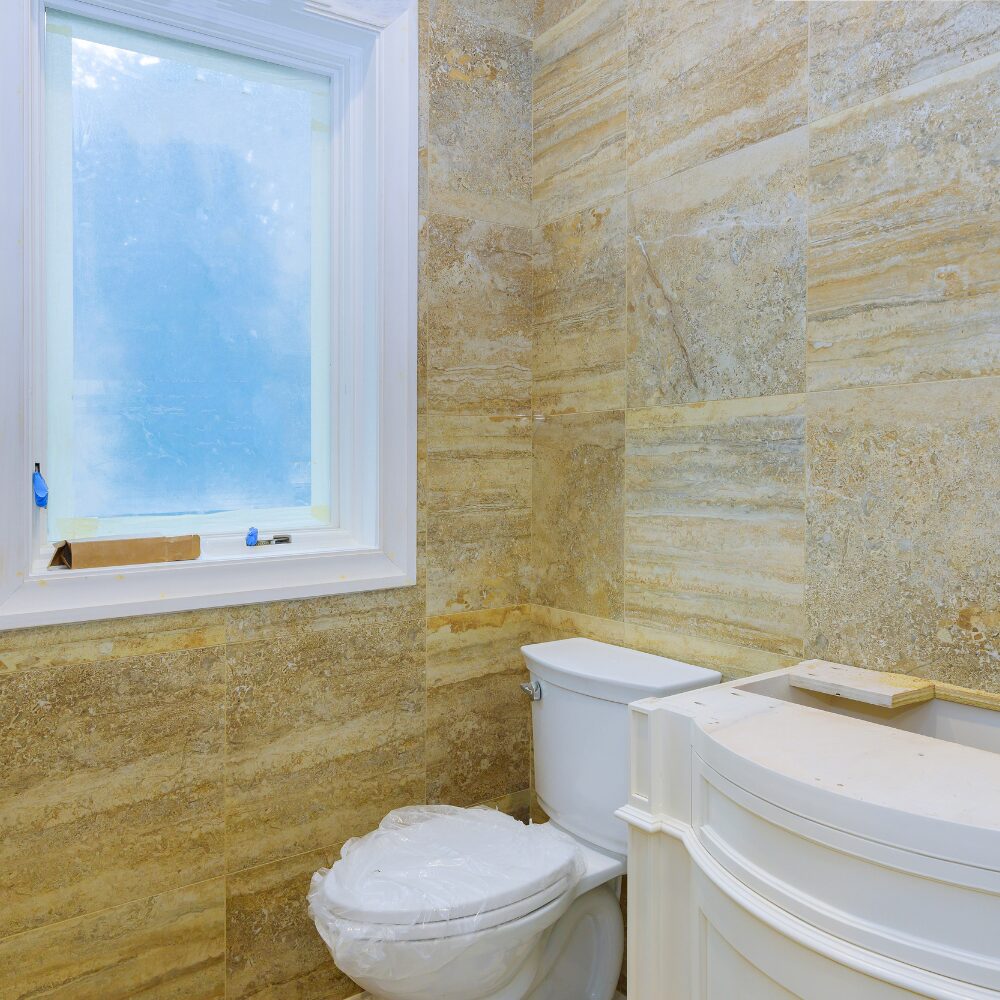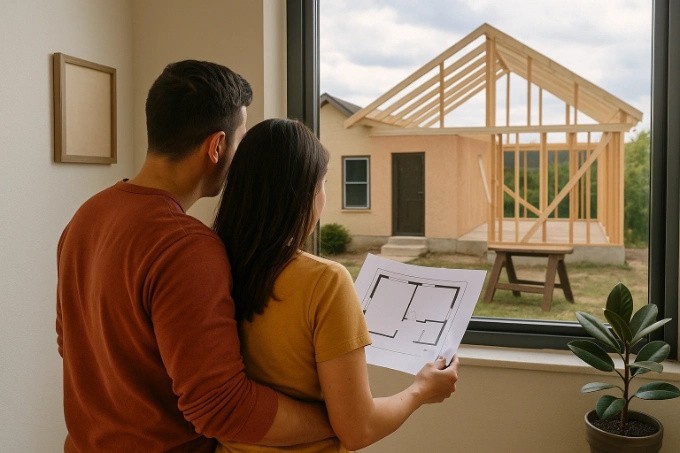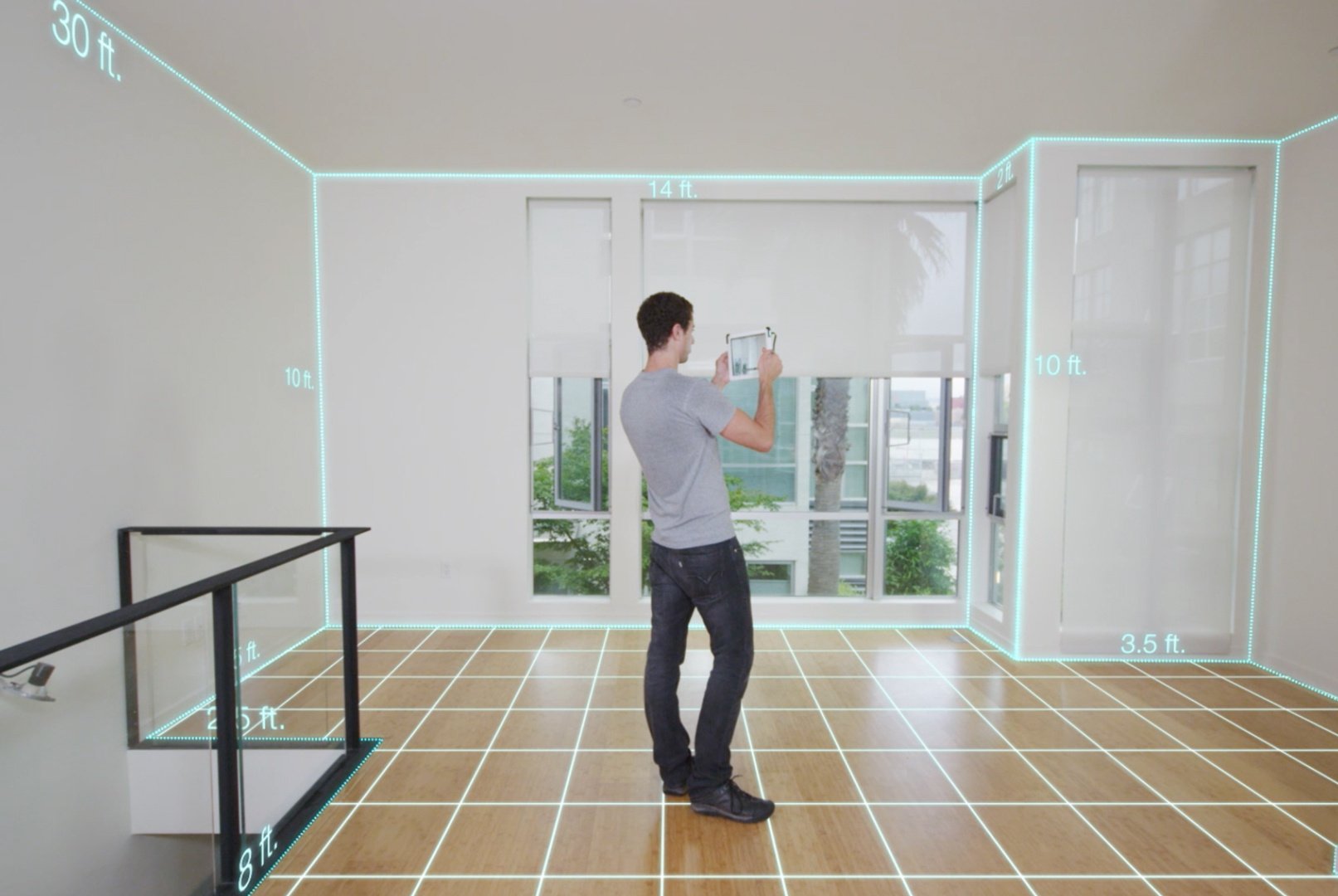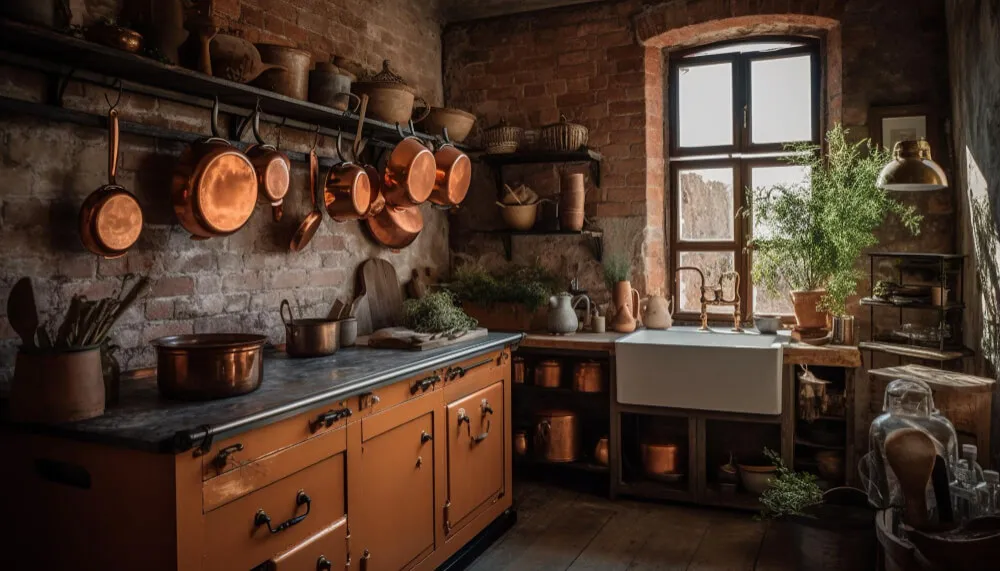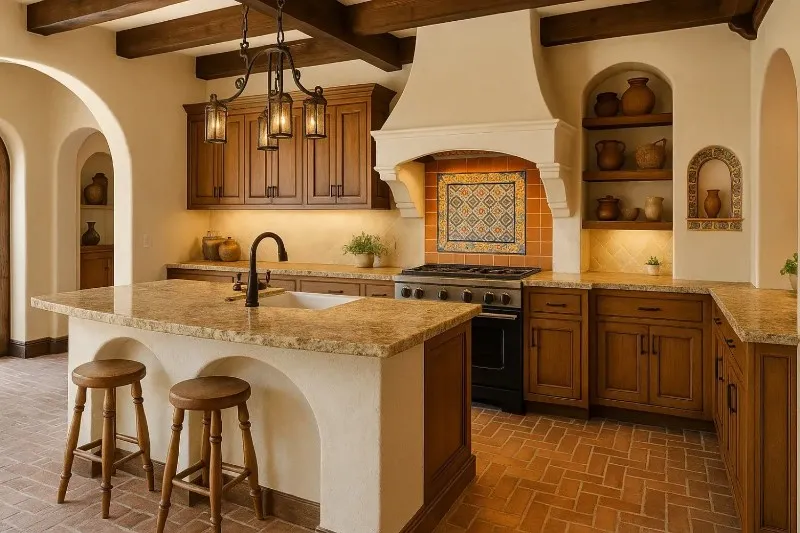Creating an eco-friendly bathroom that blends sustainability and style is a fulfilling project. You may design a room that is both visually beautiful and environmentally beneficial by choosing materials, fixtures, and everyday routines carefully. This thorough guide will assist you in turning your bathroom into a green haven.
Sustainable Materials:
One of the most significant choices you can make when constructing an eco-friendly bathroom is to choose sustainable materials. In addition to reducing environmental damage, sustainable materials also make living spaces healthier. Here’s a closer look at three important sustainable material selections:
-
Recycled Tiles:
Conventional tiles contribute to mining waste and excessive production energy consumption because they are frequently made from non-renewable resources. You may assist keep waste out of landfills and revitalize old materials by using recycled glass or porcelain tiles.
- Recycled Glass Tiles: Glass trash from industry and post-consumer sources is used to make recycled glass tiles. They come in a range of hues and finishes and are incredibly resilient to moisture. Additionally, because of their reflective qualities, a place might become brighter and require less artificial lighting.
- Recycled Porcelain Tiles: Made from industrial waste or salvaged ceramic, these tiles have a reduced carbon footprint than traditional porcelain while yet being just as durable and water-resistant.
Recycled tiles not only cut down on waste and resource extraction, but they also give your bathroom a distinctive and eye-catching look.
-
Low-VOC Paints:
Paints are essential to the aesthetics of bathrooms, but conventional paints frequently include volatile organic compounds (VOCs), which over time can emit toxic chemicals into the atmosphere. These substances may result in headaches, respiratory disorders, and long-term health difficulties in addition to contributing to indoor air pollution.
- Why Use Paints with Low or No VOC? The interior air quality is greatly improved by these environmentally friendly substitutes, which have less or no hazardous emissions.
- More Suitable for Humid Conditions: Choosing a mold-resistant, low-VOC paint guarantees a healthier and longer-lasting finish because bathrooms are frequently damp spaces.
- Sustainable Brands: To further lessen their influence on the environment, many paint producers now provide water-based, non-toxic paints manufactured from natural minerals or plant-based chemicals.
Selecting low-VOC paints helps you achieve your sustainability and well-being objectives by keeping your bathroom a clean, toxin-free space.
Reclaimed Fixtures:
The best method to make your bathroom more environmentally friendly is to reuse things that would otherwise be thrown away. Reclaimed fixtures lessen the need for new resources while adding elegance and utility. Examples include antique lighting, repurposed sinks, claw foot tubs, and wood vanities.
- Reclaimed Sinks and Bathtubs: By restoring sinks and bathtubs, outdated fixtures are kept out of landfills. For instance, the environmental cost of refinishing cast-iron tubs is far lower than that of producing new ones.
- Reclaimed Wood Vanities: Aside from reducing deforestation, using reclaimed wood for shelving or vanities gives your room cosines and personality.
Using salvaged materials gives your bathroom a unique, environmentally friendly design while lowering carbon emissions and landfill waste.
Water Conservation:
Despite being one of the most valuable natural resources, restrooms use almost half of a household’s water. Without sacrificing comfort or functionality, you may use water-saving fixtures to cut waste, utility costs, and support a more sustainable way of living. Here are some ways that rimless toilets, dual-flush toilets and low-flow fixtures can improve the use of your bathroom while saving water.
-
Low-Flow Fixtures: Reduce Water Usage Without Sacrificing Performance:
While maintaining the same amount of pressure and efficiency, low-flow showerheads and faucets are made to use a lot less water than normal models.
Low-Flow vs. Standard Fixtures:
- Conventional showerheads consume at least 2.5 gallons per minute (GPM).
- Low-flow showerheads save thousands of gallons annually by lowering this to 1.5 GPM or less.
- Low-flow faucets run at 1.5 GPM or less, whereas standard faucets usually use 2.2 GPM.
How They Work:
- In order to maintain pressure while decreasing flow, aerators combine air and water.
- Technology that uses laminar flow produces a powerful stream with minimal water waste.
- You can regulate the amount of water produced as needed thanks to adjustable settings.
Environmental and Financial Benefits:
- Reduces a bathroom’s water consumption by up to 40%.
- Lowers energy costs by reducing the amount of energy required to heat water.
- Helps preserve water supplies, particularly in regions that are vulnerable to drought.
An easy and affordable option to significantly reduce water usage without compromising your daily routine is to switch to low-flow fixtures.
-
Dual-Flush Toilets: A Smart Way to Control Water Usage
Nearly 30% of the water used in a home is used for toilets, making them one of the largest water users. By providing you with two flushing options, dual-flush toilets provide an inventive solution that significantly reduces water usage.
The Operation of Dual-Flush Toilets:
- For liquid waste, flush lightly (0.8–1.1 gallons per flush).
- A complete solid waste flush (1.6 gallons each flush).
- By selecting the proper flush, users can cut down on needless water waste.
Water Savings:
- Homes can save thousands of gallons of water a year by switching to dual-flush toilets, which use up to 67% less water per flush than traditional toilets, which use 3.5–7 gallons.
Extra Advantages:
- Reduce water costs over time.
- Septic systems are under less stress, which lowers maintenance expenses.
- Accessible in chic and contemporary styles that go well with the decor of any bathroom.
A dual-flush toilet is a cost-effective and environmentally responsible update that guarantees you only use the water you require, reducing household expenses and resource consumption.
-
Rimless Toilets: Efficient Flushing and Hygienic Design
Despite being relatively new to the market, rimless toilets are rapidly becoming more and more well-liked due to its greater water efficiency and hygienic advantages.
A Rimless Toilet: What Is It?
- Rimless toilets remove the inner edge, avoiding the accumulation of filth, bacteria, and lime scale that is associated with standard toilets that have a rim around the bowl.
- It uses less water per flush and is more effective because the water is pushed uniformly around the bowl with a direct, powerful flow.
Benefits of Clean Toilets:
- Better Hygiene: Cleaning is made easier because there are no hiding places for germs to grow.
- Improved Water Efficiency: Maintains great flushing power while using less water per flush.
- Contemporary and Stylish Design: available in modern designs, ideal for a chic and environmentally responsible bathroom.
Features that Save Water:
- Dual-flush technology is a common feature of rimless toilets, which significantly lowers water usage.
- By ensuring that you rarely need to flush twice, more efficient flushing helps you avoid wasting water.
A rimless toilet is the ideal alternative for households seeking a low-maintenance, hygienic, and water-efficient toilet.
Energy Efficiency:
One of the best ways to make your bathroom more eco-friendly and sustainable is to increase its energy efficiency. You can minimize your overall carbon footprint, cut utility costs, and use less electricity by optimizing natural light and using smart lighting.
-
LED Lighting: The Smarter Choice for Energy Savings
Any bathroom needs lighting, but conventional incandescent bulbs are very inefficient, using more energy and producing more heat than they need to. Making the switch to LED (Light Emitting Diode) bulbs is a more environmentally friendly option that has several advantages for your house and the environment.
Why Opt for LED Lighting?
- Energy Savings: LEDs drastically lower your electricity usage by up to 80% when compared to conventional incandescent lights.
- Extended Lifespan: Compared to conventional bulbs, LEDs last 25–50 times longer, which reduces waste and replacement expenses.
- Reduced Heat Emission: LEDs stay cool, which helps keep the temperature of a bathroom comfortable, in contrast to incandescent lamps that produce too much heat.
- Numerous Options: LED lighting may be tailored to create the ideal atmosphere and comes in warm, cold, and daylight tones.
- Eco-Friendly Materials: LEDs are safer to dispose of and better for the environment because they do not contain harmful substances like mercury.
Methods for Adding LED Lighting to Your Bathroom:
- LED vanity lights: Use less energy and provide clear, bright illumination for everyday grooming needs.
- Motion-Sensor LED Lights: These lights automatically switch off when not in use, saving energy.
- Backlit LED mirrors: Increase energy economy while adding a sleek, contemporary touch.
- Dimmable LED Fixtures: Dimmable LED fixtures let you change the brightness according to your preferences and the time of day.
You may save money over time and help the environment by switching to LED lighting instead of conventional bulbs.
-
Natural Lighting: Harnessing the Power of the Sun
Adding natural light sources is one of the best strategies to lower the energy usage in your bathroom. By making the most of natural light, you may drastically lessen your reliance on artificial lighting, making your environment lighter and cozier while using less energy.
Natural lighting in the bathroom has several advantages:
- Reduces Electricity Use: Daytime energy use is reduced by sunlight, which provides free illumination.
- Enhances Well-Being: Getting more natural light can help you focus better, feel happier, and sleep better.
- Provides an Open and Airy Feel: A bathroom with adequate lighting seems more roomy, welcoming, and attractive.
- Minimizes Harsh Shadows: Natural light softens shadows, which facilitates shaving and cosmetics application.
Design Strategies to Maximize Natural Light:
Put in skylights:
- Without taking up wall space, direct sunshine may brighten a bathroom using a solar tube or skylight.
- Solar tubes, which direct sunshine into your bathroom through a reflective tube, are an excellent substitute if you have limited access to the roof.
Expand the Size of the Window:
- Greater daylight penetration through larger windows reduces the demand for artificial illumination.
- Consider using textured window coatings or tinted glass to distribute light discreetly if privacy is an issue.
Make Use of Reflective Surfaces
- Use glass fixtures, glossy flooring, and mirrors to help the room reflect natural light.
- Natural brightness can be enhanced by carefully positioning a mirror across from a window.
Select Light Wall and Décor Colors:
- Lighter hues, such pastels, soft whites, and neutral tones, assist reflect sunshine and make the room appear brighter overall.
Prioritizing natural lighting will help you create an energy-efficient, well-lit bathroom that feels airy and revitalizing while lowering your dependency on artificial lighting.
The Bigger Picture: Why Energy Efficiency Matters
Using energy-efficient bathroom solutions is good for the environment and your pocketbook. Over time, these minor adjustments—whether they are made with LED lighting, natural sunlight, or clever design—add up to substantial savings.
Important Tips for an Energy-Efficient Bathroom:
- Replace your old lights with LEDs to save energy and prolong the life of your bulbs.
- Use skylights, bigger windows, and reflective surfaces to add natural light.
- To maximize energy use, utilize dimmable lights or motion sensors.
- Select light-colored furnishings and walls to accentuate the inherent brightness.
You can turn your bathroom into an energy-efficient, environmentally friendly haven that encourages sustainability and comfort for many years to come by implementing these easy yet powerful changes.
Eco-Friendly Décor:
In addition to installing energy-efficient lighting and water-saving fixtures, designing an eco-friendly bathroom also entails selecting sustainable décor that reduces environmental impact while improving aesthetics. A fashionable and eco-friendly bathroom may be achieved with subtle but deliberate choices, such as using sustainable materials and adding indoor vegetation.
-
Sustainable Accessories: Beautiful and Earth-Friendly:
Choosing bathroom décor pieces requires careful consideration of factors including environmental impact, durability, and origin. Selecting accessories manufactured with sustainable materials promotes ethical manufacturing, lowers carbon emissions, and reduces waste.
What Makes Sustainable Accessories Necessary?
- Reduces Deforestation: Deforestation is lessened by choosing bamboo or repurposed wood, which also reduces trash.
- Renewable and Biodegradable: Natural materials like bamboo and wood disintegrate more readily and regenerate more rapidly than plastic accessories.
- Healthy & Non-Toxic: A lot of sustainable materials do not include dangerous chemicals, which makes them safer for the environment and your house.
Eco-Friendly Bathroom Accessories to Take into Account:
- Bamboo Soap Dispensers & Toothbrush Holders: Bamboo is a highly renewable and biodegradable resource because it grows among the quickest plants.
- Reclaimed Wood Shelving: Adding shelves constructed from salvaged or reclaimed wood warms your bathroom while preventing materials from ending up in landfills.
- Eco-Friendly Bath Mats: For a fashionable and sustainable touch, use cork, bamboo, or organic cotton bath mats in place of synthetic rugs.
- Recycled Glass Containers: Rather of purchasing new plastic containers, store products like cotton swabs or bath salts in recycled glass jars.
- Shower Curtains That Can Be Compiled: While traditional vinyl shower curtains are made of PVC and harmful chemicals, linen or hemp shower curtains are mold-resistant and biodegradable.
In addition to creating a beautiful and sustainable bathroom, choosing eco-friendly accessories is a tiny but meaningful step towards lowering the carbon footprint of your house.
-
Indoor Plants: Natural Beauty with Health Benefits
In addition to improving the aesthetics of your bathroom, indoor plants have a number of health advantages. Your bathroom will feel like a spa because to the natural air purification, moisture absorption, and relaxing atmosphere those plants provide.
Advantages of Indoor Plants in the Bathroom:
- Enhances Air Quality: A lot of houseplants remove toxins like benzene and formaldehyde, which are frequently present in cleaning supplies.
- Controls Humidity: By absorbing surplus moisture, plants aid in the inhibition of the growth of mould and mildew.
- Improves Well-Being: Research indicates that being surrounded by plants can lower stress and improve mood.
- Adds Natural Aesthetics: A little greenery softens the appearance of metal, glass, and tile, making the space feel cozier.
Best Bathroom Plants for Humid Environments:
Ferns (e.g., Boston Fern, Bird’s Nest Fern):
- Thrives in indirect light and high humidity.
- Serves as an organic air cleanser.
- Adds beautiful, soft foliage to create a rich appearance.
Pathiphyllum, or peace lily:
- Great for eliminating airborne pollutants
- Adapts to low light levels
- Have tasteful white blossoms for a sophisticated appearance.
Vera Aloe:
- Requires little upkeep.
- Offers calming gel for irritated and burned skin.
- Prefers indirect, bright sunshine.
The Chlorophytum comosum spider plant:
- Among the greatest plants for cleansing the air
- Thrives in a range of lighting situations.
- Pet-safe and low-maintenance.
Sansevieria, the snake plant:
- Accepts sporadic irrigation and low light levels
- Removes dangerous substances from the filter
- Sculptural and contemporary look
Orchids:
- Adores humid settings
- Needs little irrigation.
- Gives off a refined, opulent vibe
Plant Placement Ideas for Your Bathroom:
- Floating shelves: Use repurposed wood shelves to create a plant display.
- Hanging planters: Make use of vertical space by mounting planters on the ceiling or using macramé.
- Windowsills: For optimal development, position plants that require light close to the window.
- Bathtub corner: The rough surfaces surrounding your tub might be softened with a tiny potted orchid or fern.
You may enhance indoor air quality, add a little of nature, and create a calm space that encourages relaxation by using bathroom-friendly plants.
-
The Bigger Picture: Why Eco-Friendly Décor Matters
Incorporating indoor plants and sustainable décor into your bathroom not only improves its looks but also encourages better living and environmental preservation.
Important Tips for an Eco-Friendly Bathroom:
- Steer clear of plastic and synthetic materials that cause pollution
- Select accessories made of bamboo, reclaimed wood, or recycled materials.
- To absorb excess humidity and enhance air quality, add indoor plants.
- For a unique design, use salvaged or recycled décor items.
You can create a sustainable, fashionable, and eco-friendly haven in your bathroom by making tiny, thoughtful decisions.
Waste Reduction:
One essential component of creating an eco-friendly bathroom design is minimizing waste. You may lessen landfill waste, lower your carbon footprint, and support a circular economy by choosing recyclable or recycled materials, living simply, and making thoughtful purchases. Efficiency is only one aspect of a sustainable bathroom; another is being aware of the sources, uses, and disposal of goods.
-
Recycled or Recyclable Products: Supporting a Circular Economy
Reusing and repurposing things instead of throwing them away is the foundation of a circular economy. By ensuring that commodities are used for as long as feasible, this strategy minimizes the impact on the environment and lowers the demand for new resources.
Why Select Recyclable or Recycled Items?
- Reduces Landfill Waste: Prevents items like metal, glass, and plastic from being thrown away after only one usage, thereby reducing landfill waste.
- Reduces Carbon Emissions: Making products from recycled materials uses less water and energy than making new ones.
- Promotes Sustainable Consumption: Selecting recyclable goods guarantees that they can be recycled rather than adding to the pollution problem.
Environmentally Friendly Items to Use in Your Bathroom:
- Recycled Toilet Paper: Conventional toilet paper uses too much water and contributes to deforestation. Choose companies whose packaging is made entirely of recycled paper instead of plastic.
- Recycled Glass or Porcelain Tiles: A lot of environmentally conscious companies sell tiles created from recycled materials, which cuts waste and gives your bathroom’s decor a distinctive touch.
- Recycled Plastic Accessories: Rather than buying brand-new plastic products think about using toothbrush holders, soap dishes, and shower caddies produced from recycled plastics.
- Recyclable Packaging: Instead of using single-use plastic for product packaging, choose biodegradable, refillable, or recyclable containers.
- Refillable Shampoo & Soap Dispensers: To cut down on waste, use glass, metal, or bamboo refillable dispensers rather than purchasing numerous plastic bottles.
You actively promote a waste-conscious lifestyle by making these minor but significant changes, guaranteeing that your bathroom will continue to be both fashionable and environmentally friendly.
-
Minimalist Design: Less Consumption, Less Waste
In addition to creating a peaceful, clutter-free space, a minimalist approach in your bathroom lowers wasteful spending and excessive consumption. Deprivation is not the goal of minimalism; rather, it emphasises thoughtful shopping and giving priority to sustainable, high-quality necessities.
Advantages of a Simple Bathroom Design:
- Less Clutter, More Space: The bathroom feels calmer and more spacious when unnecessary items are removed.
- Cuts Down on Overconsumption: Purchasing only what you require avoids waste and pointless expenditures.
- Long-lasting and sustainable: Purchasing sturdy, high-quality goods will save you from having to replace them often.
How to Achieve a Minimalist Bathroom:
- Regularly declutter:
- Sort through your bathroom supplies and get rid of those that are unused or expired.
- Do not hoard shampoos, soaps, or skincare items; use what you already have before purchasing new ones.
Select Products with Multiple Functions
- All-in-One Soap Bars: To cut down on packaging waste, use shampoo bars that also function as body wash.
- Solutions for Multipurpose Storage: To keep necessities organized, use under-sink organizers or floating shelves.
- Dual-Purpose Towels: Make an investment in organic cotton towels that dry quickly and are suitable for both the hands and the body.
Invest in Durable, Superior Materials
- Choose accessories made of glass, bamboo, or stainless steel instead of plastic because they endure longer.
- Select eco-friendly, long-lasting tiles that will not require frequent replacements.
Steer Clear of Single-Use Items
- Use a safety razor with replaceable blades instead of throwaway ones.
- Instead of using cotton rounds, use reusable, washable makeup removal pads.
- Use biodegradable bamboo toothbrushes instead of plastic ones.
Making thoughtful, environmentally responsible decisions that contribute to long-term waste and consumption reduction is what a minimalist bathroom is all about, not simply aesthetics.
-
The Bigger Picture: Why Waste Reduction Matters
Adopting waste reduction techniques in your lavatory supports a broader environmental movement that places an emphasis on resource conservation, sustainability, and mindful living.
Key Takeaways for a Waste-Reducing Bathroom:
- Promote a circular economy, choose recyclable or recycled materials.
- Clear clutter and concentrate on high-quality, necessary items.
- Use glass storage jars, refillable dispensers, and multipurpose things.
- Steer clear of single-use plastics and disposable items wherever you can.
- For long-term sustainability, use minimalist design concepts.
Reducing trash helps you save money, lessen your carbon footprint, and design a bathroom that is both eco-friendly and practical. A waste-conscious bathroom is a step towards a more sustainable, greener way of living. Little adjustments have a tremendous influence.
Daily Habits:
Sustainability encompasses more than simply design decisions; it also refers to routine behaviors that lessen environmental impact and resource use. It is possible to significantly reduce waste and your carbon footprint by being aware of the things you use and the way you utilize water.
-
Eco-Friendly Bath Products: A Healthier Choice for You and the Planet
The harsh chemicals, artificial perfumes, and plastic-based packaging included in many traditional bath products damage the environment and disturb natural ecosystems. Choosing natural, eco-friendly, and biodegradable substitutes guarantees that your personal hygiene regimen is in line with sustainability.
Qualities Should Sustainable Bath Products Have?
- Biodegradable Ingredients: Select goods that have natural, plant-based components that decompose readily in water systems.
- Plastic-Free or Recyclable Packaging: Use glass, metal, or biodegradable packaging instead of single-use plastic bottles.
- No Dangerous Chemicals: Avoid synthetic scents, parabens, and sulphates as they can irritate skin and cause pollution.
- Cruelty-Free and Ethically Sourced: Ethically sourced and cruelty-free Encourage companies who do not conduct animal testing and utilize fair-trade ingredients.
Eco-Friendly Bathroom Product Alternatives:
- Shampoo and Conditioner Bars: These solid bars replace plastic bottles and are more durable than conventional liquid versions.
- Organic Bar Soap: Use natural, handmade bar soaps produced from shea butter, coconut oil and essential oils in place of body wash in bottles.
- Bamboo Toothbrushes: To cut down on plastic waste, replace plastic toothbrushes with biodegradable bamboo ones.
- Refillable and DIY Cleaning Products: DIY and refillable cleaning supplies DIY non-toxic bathroom cleaners can be prepared with vinegar, baking soda and aromatic oils.
- Reusable Cotton Rounds and Cloth Towels: Use washable, reusable cotton pads and cloth towels instead of single-use ones.
Making the switch to environmentally friendly personal care products lowers your exposure to dangerous pollutants and guarantees that rivers are less polluted, which benefits both the environment and your health!
-
Mindful Water Usage: Simple Changes, Big Impact
Since fresh water is a finite resource, water conservation is essential to sustainability. Unbeknownst to them, many individuals squander gallons of water every day, which raises utility costs and stresses the environment.
Easy Methods to Cut Down on Water Waste:
- Shut Off the Tap: A running tap can waste up to 4 liters of water every minute! Switch it off while shaving, cleaning your face, or brushing your teeth.
- Use Dual-Flush or Low-Flow Toilets: These toilets use less water every flush, saving thousands of gallons a year.
- Take Shorter Showers: Even a 2-minute shower can save 10 gallons of water.
- Limit Baths: Although baths are soothing, they consume a lot more water than showers; instead, take a brief shower.
- Reuse Greywater: Gather water from showering, washing hands, or washing fruits and vegetables and use it to irrigate plants.
- Water-Saving Habits That Make a Difference:
- Use a Cup to Rinse While Brushing: After brushing your teeth, fill a small cup to rinse in rather than running the water.
- Repair leaky pipes and faucets: Fix leaks right now because a leaky tap can waste more than 3,000 gallons of water annually.
- Install a Showerhead That Uses Less Water Showerheads with low flow utilize 30% less water without compromising pressure.
- Wash laundry efficiently by using cold water settings whenever possible and only running full loads if your washing machine is in the bathroom.
Water conservation is a simple yet effective habit to form because it not only saves this valuable resource but also decreases your utility bills.
-
The Bigger Picture: Small Steps Lead to Big Change
Making thoughtful decisions every day is more important than simply renovating a bathroom to make it more environmentally friendly. You may actively help to reduce pollution, conserve resources, and safeguard the environment by using eco-friendly bath products and practicing mindful water use.
Key Takeaways for a More Sustainable Bathroom:
- Reduce waste by using bath products that are biodegradable and plastic-free.
- Select eco-friendly packaging for natural, cruelty-free personal care products.
- Use water-saving fixtures, turn off faucets, and take shorter showers.
- When feasible, fix leaks and water plants with greywater.
- Adopt a mindful mindset—even little actions have a big positive effect!
You may improve your own health and the sustainability of our planet by implementing minor yet meaningful adjustments to your everyday routine.
Why choose Laguna Bay Developing:
By selecting Laguna Bay Developing, you are joining forces with a devoted group of people who are determined to creating your ideal Eco-Friendly Bathroom with excellence, honesty, and individualized care.
Conclusion
In addition to being a fad, designing an eco-friendly bathroom is a significant step towards sustainable living. You may create a stylish and eco-friendly room by carefully choosing your materials, using less water, using less electricity, and forming greener habits. Every thoughtful decision you make, like adding natural lighting, utilizing recycled materials, or installing low-flow fixtures, helps you lessen your environmental impact while improving comfort and functionality. Sustainability and luxury may coexist peacefully since small adjustments can have big effects. Begin remodeling your bathroom right now to help create a healthier planet for coming generations.

